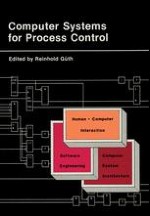1986 | OriginalPaper | Buchkapitel
Requirements Engineering and Software Development: A Study Toward Another Life-Cycle Model
verfasst von : Y. Matsumoto
Erschienen in: Computer Systems for Process Control
Verlag: Springer US
Enthalten in: Professional Book Archive
Aktivieren Sie unsere intelligente Suche, um passende Fachinhalte oder Patente zu finden.
Wählen Sie Textabschnitte aus um mit Künstlicher Intelligenz passenden Patente zu finden. powered by
Markieren Sie Textabschnitte, um KI-gestützt weitere passende Inhalte zu finden. powered by
The problem of how to increase both productivity and quality is of primary concern in software production. The waterfall life-cycle model is a strict sequence of phases where the sequential order is fixed. The paper describes a unified life-cycle model which is a derivative of the waterfall model. The unified model is a scheme for connecting the phases in the life cycle in a customized order and to bring about higher productivity. A distinctive feature of the unified model is the “semantic model” which is created at the top phase of the life cycle. The selected phases are arbitrarily interconnected to this phase in the order selected by the designer.In the waterfall life-cycle model, consideration of implementation is delayed until after the requirements are completely specified. In the unified life-cycle model designers are allowed to devise a prototype model which satisfies user requirements, describe it and execute it during the requirement-specification phase. The semantic model is a representation of this model in a semantics which is compatible with that of the implementation. In other words, the semantics applied in describing the semantic model will be consistent with the semantics in which the programming of the software system for the target computer system is implemented. Applying one unique semantics throughout the life cycle is beneficial because the maintainability of the documents in the early phases could be improved to the degree in which the source text for those documents is maintained.The semantic model is a set of objects interconnected with one another through the passing of messages. The paper describes a technique for defining objects from the requirements and their description by an object-oriented language called OKBL (object-oriented knowledge-based language). Each defined object may be transformed to a set of functions or it may be transformed to a set of program modules in the succeeding design phases. The final codes for the target computers may also be described in OKBL. Following a unique semantics throughout the life cycle leads to increased productivity for the following reasons: - Describing specifications based on the same semantics throughout the whole life cycle increases traceability between phases and results in improvement in maintainability.- Reusing existing objects simplifies the problems of reusability improvement.- The time spent in the intermediate phases, where the transformations from requirements to programs are made, is shortened.
